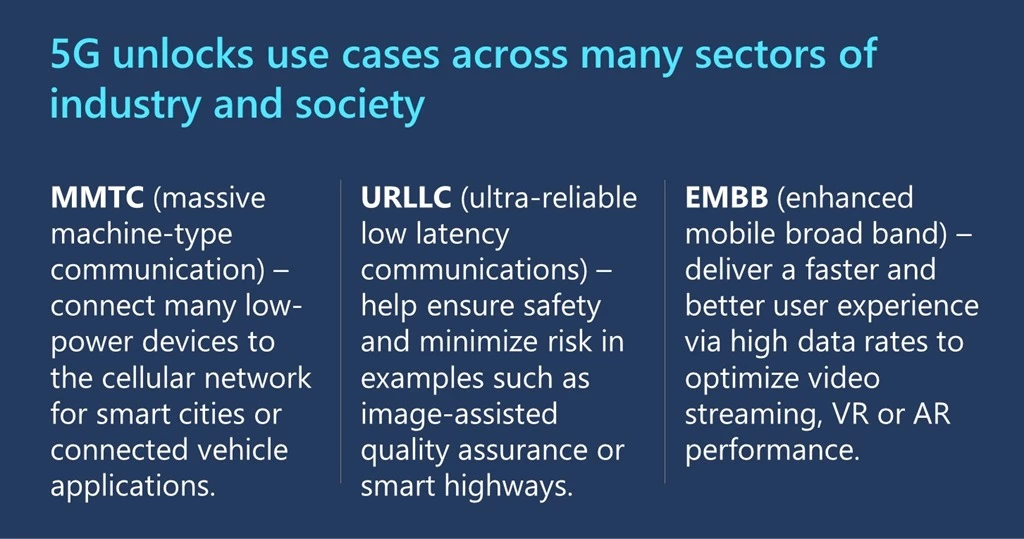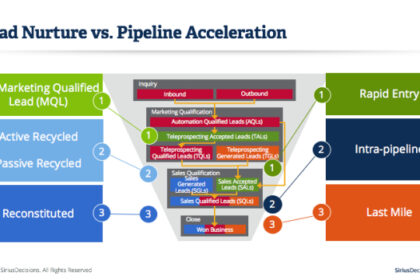Unleashing the Future: How 5G Technology is Revolutionizing Business Innovation and Digital Transformation
The digital landscape is constantly evolving, driven by groundbreaking technological advancements. Among these, 5G technology stands as a monumental leap forward, poised to redefine the very fabric of how businesses operate, innovate, and connect. More than just a faster network, 5G represents a fundamental shift in connectivity solutions, unlocking unprecedented capabilities for business innovation and accelerating the pace of digital transformation across every industry. For entrepreneurs and industry leaders, understanding and leveraging 5G is not merely an option, but a strategic imperative for future relevance and competitive advantage.
Imagine a world where data flows seamlessly, instantly, and reliably, enabling real-time decision-making, hyper-personalized customer experiences, and fully autonomous operations. This is the promise of 5G, a technology that transcends traditional mobile connectivity to become the backbone of the next industrial revolution. Its unique characteristics—blazing speeds, ultra-low latency, and massive capacity—are creating a fertile ground for novel applications and services that were once confined to the realm of science fiction. From smart factories and remote healthcare to immersive retail and intelligent logistics, 5G is not just enhancing existing processes; it is enabling entirely new business models and operational paradigms. This comprehensive guide will explore the profound impact of 5G, providing a visionary outlook on how it can propel your enterprise into an era of unparalleled growth and innovation.

The Quintessence of 5G: Beyond Speed
While often celebrated for its incredible speed, 5G is far more than just a souped-up version of 4G. It is a foundational technology built on three core pillars, each offering distinct advantages that collectively create a powerful platform for business innovation. Understanding these pillars is crucial for entrepreneurs and industry leaders to fully grasp the strategic potential of 5G.

Enhanced Mobile Broadband (eMBB): Paving the Way for Richer Experiences
The most commonly understood aspect of 5G, eMBB delivers significantly higher speeds and greater capacity than previous generations. With peak speeds potentially reaching 10 gigabits per second (Gbps) and average speeds far exceeding 4G, eMBB allows for ultra-fast downloads, seamless streaming of 8K video, and truly instantaneous cloud access. This capability transforms mobile workforces, enabling complex data analysis, high-fidelity video conferencing, and access to graphics-intensive applications from virtually anywhere. For businesses, this means:
- Improved Productivity: Employees can access and process large files, collaborate in real-time on complex projects, and utilize cloud-based tools without frustrating delays.
- Immersive Customer Experiences: High-bandwidth enables next-generation AR/VR applications for product demonstrations, virtual showrooms, and interactive training.
- Rich Content Delivery: Media and entertainment companies can deliver higher quality content, live events with multiple camera angles, and interactive experiences directly to users.
- Autonomous Systems: Self-driving vehicles, drones, and robots can communicate and react in real-time, making autonomous operations safer and more efficient.
- Remote Control of Critical Infrastructure: Enables precise remote operation of machinery, surgical robots, and industrial equipment, expanding possibilities for expertise sharing and operational efficiency.
- Real-time Analytics and AI at the Edge: Data can be processed and analyzed at the network edge, providing immediate insights for proactive decision-making in manufacturing, logistics, and healthcare.
- Smart Cities and Infrastructure: Connecting countless sensors for traffic management, environmental monitoring, public safety, and utility management.
- Industrial IoT (IIoT): Deploying thousands of sensors in factories for predictive maintenance, asset tracking, quality control, and energy management.
- Connected Agriculture: Monitoring soil conditions, crop health, and livestock in real-time across vast areas to optimize yields and resource usage.
- Automated Guided Vehicles (AGVs) and Autonomous Mobile Robots (AMRs): 5G’s uRLLC enables these robots to navigate complex factory floors safely and efficiently, communicating with each other and central systems in real-time to optimize material flow and assembly.
- Predictive Maintenance: Thousands of 5G-connected sensors on machinery continuously monitor performance, temperature, vibration, and other metrics. This data is analyzed at the edge using AI, predicting potential failures before they occur, reducing downtime, and extending equipment lifespan.
- Augmented Reality (AR) for Workers: Technicians can use AR headsets connected via 5G to overlay digital instructions, schematics, or expert guidance onto physical equipment, improving training, repair efficiency, and quality control.
- Mass Customization: Flexible 5G-enabled production lines can quickly reconfigure to produce highly customized products, meeting evolving customer demands with agility.
- Telemedicine and Remote Patient Monitoring: High-bandwidth 5G enables crystal-clear video consultations and the transmission of large medical images (e.g., MRI, CT scans) in seconds. mMTC supports an ecosystem of connected wearables and sensors that continuously monitor vital signs, glucose levels, and other health metrics, allowing doctors to intervene proactively.
- Remote Surgery and Haptic Feedback: Ultra-low latency is critical for robotic-assisted surgeries performed remotely. Surgeons can control robotic instruments with precision, receiving haptic feedback in real-time, effectively extending expert care to underserved areas.
- Ambulance and Emergency Services: 5G connectivity allows paramedics to transmit real-time patient data, high-definition video, and even live diagnostics to emergency room doctors while en route, enabling earlier diagnosis and preparedness upon arrival.
- AR/VR for Medical Training: Medical students can practice complex procedures in immersive virtual environments, enhancing learning and skill development without risk to patients.
This enhanced bandwidth is a critical enabler for many data-intensive digital transformation initiatives.

Ultra-Reliable Low-Latency Communications (uRLLC): The Fabric of Real-Time Operations
Perhaps the most revolutionary aspect of 5G for business innovation is its ultra-low latency. Latency, the delay between sending and receiving information, is dramatically reduced to as little as 1 millisecond (ms) with 5G, compared to 20-30 ms or more with 4G. Coupled with exceptional reliability, uRLLC opens doors to applications requiring instantaneous feedback and precise control, where even a fraction of a second delay can have significant consequences. This capability is foundational for:
“Low latency is the silent hero of 5G, transforming reactive systems into predictive powerhouses.” This pillar is essential for truly intelligent operations.

Massive Machine-Type Communications (mMTC): Connecting the Internet of Everything
mMTC addresses the need to connect an unprecedented number of devices, sensors, and machines simultaneously and efficiently. 5G is designed to support up to one million devices per square kilometer, a massive increase over 4G. This capacity is vital for the widespread deployment of the Internet of Things (IoT), enabling a dense network of connected sensors to collect vast amounts of data without overwhelming the network. Key implications include:
This immense capacity makes 5G the ultimate connectivity solution for scaling IoT deployments, driving data-driven insights, and fostering pervasive digital transformation.

5G’s Transformative Impact Across Key Industries
The convergence of these three pillars means 5G is not just an incremental upgrade; it is a catalyst for radical change across virtually every sector. Entrepreneurs and industry leaders must look beyond their immediate operational needs to envision the entirely new possibilities 5G presents.
Manufacturing and Industry 4.0: The Smart Factory Revolution
For manufacturing, 5G is the backbone of Industry 4.0, enabling the smart factory vision. Wireless connectivity replaces cumbersome cables, allowing for flexible production lines, mobile robots, and real-time monitoring of every machine and process.
Specific innovations include:
Case Study: A major automotive manufacturer deployed a private 5G network in its factory, enabling real-time data collection from robotic arms and assembly lines. This led to a 15% reduction in production errors and a 20% increase in operational efficiency within the first year, demonstrating the profound impact of robust connectivity solutions on manufacturing business innovation.
For more insights into creating resilient operations, consider exploring strategies for optimizing your supply chain in the digital age.
Healthcare: Redefining Care Delivery and Patient Outcomes
The healthcare sector is ripe for digital transformation through 5G, moving towards more personalized, accessible, and efficient care.
Key applications include:
“5G is not just connecting devices; it’s connecting lives, enabling a new era of proactive and accessible healthcare.”
Retail and Consumer Experiences: Hyper-Personalization and Immersive Shopping
5G transforms the retail experience, blending the physical and digital worlds to create hyper-personalized and engaging interactions.
Innovations include:
- Augmented Reality (AR) Shopping: Customers can use 5G-enabled devices to virtually try on clothes, place furniture in their homes, or visualize how products look in real-time,



